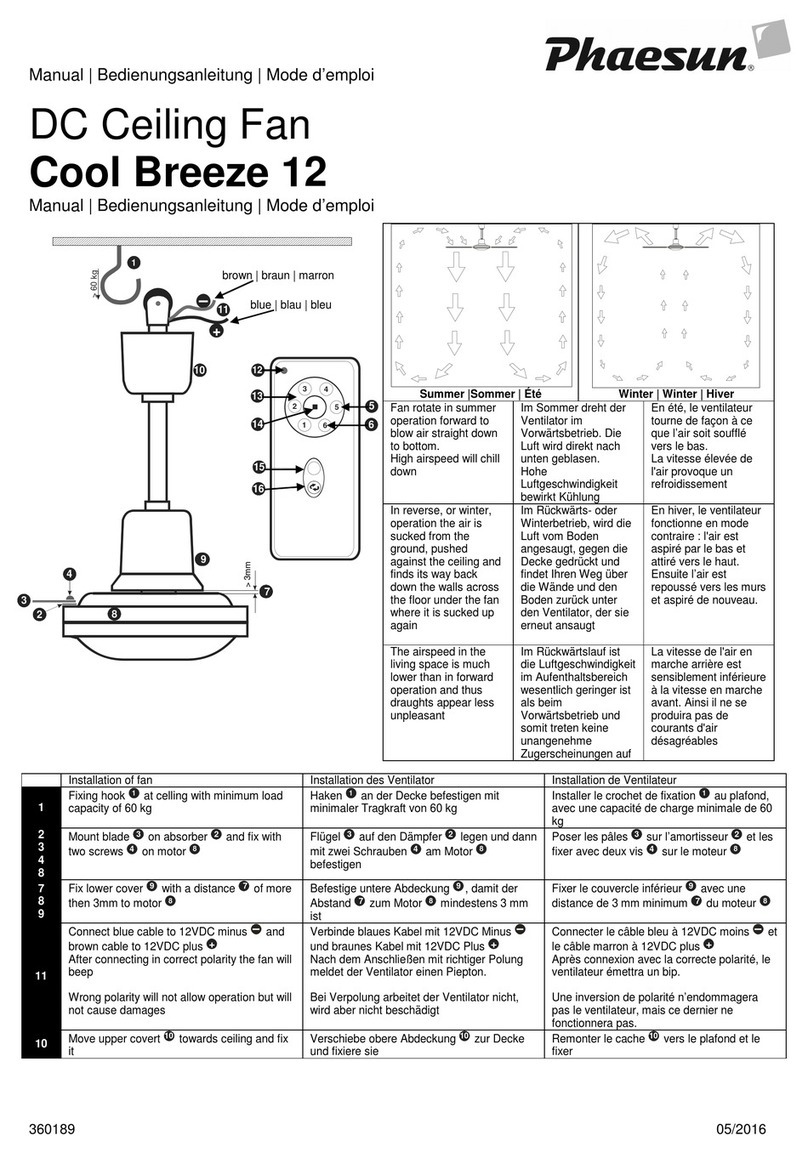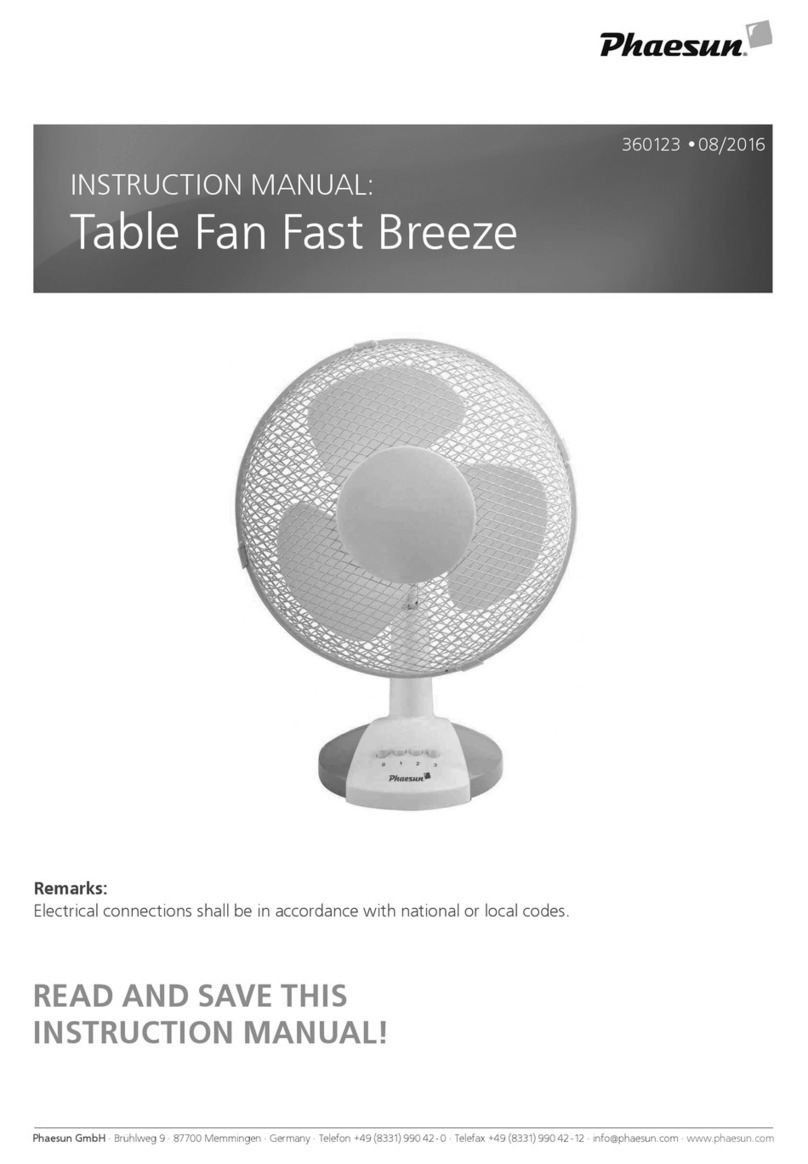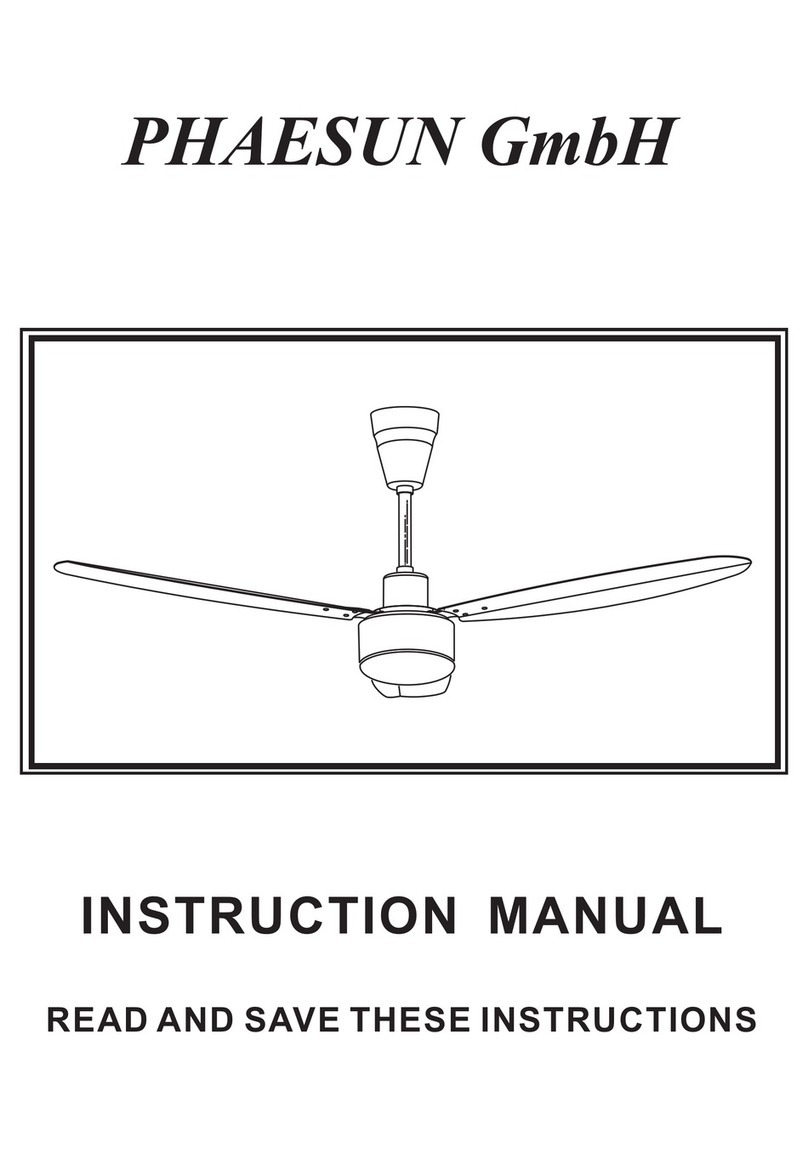9
Beim Einsatz jeglicher Elektrogeräte sind einige Grundregeln stets zu beachten, darunter im
Einzelnen:
Allgemein
- Die Spannungsangabe auf dem Typenschild muss mit der vorhandenen Netzspannung übereinstimmen.
- Das Hausnetz muss geerdet sein!
- Gerät darf nur vollständig montiert betrieben werden!
Wichtig
Für den elektrischen Anschluss dieses Ventilators wird empfohlen sich an
einen spezialisierten Fachmann zu wenden.
Sicherheitshinweise
Vor Zugang an den Anschluss muss der Strom allpolig abgestellt werden. Der Netzanschluss, an
welchen Sie angeschlossen sind, muss den geltenden Normen entsprechen. Der Festanschluss
muss mit einer Allpoltrennung mit Kontaktabstandsöffnung von mindestens 3 mm versehen
sein. Wir empfehlen, den Anschluss von einem qualifizierten Elektriker vornehmen zu lassen.
Die Struktur der Decke und u. U. der Anschlussdose müssen das Gewicht des Ventilators bei
Bewegung tragen können, d. h. ca. 15 kg minimum. Wählen Sie einen sicheren, ungefährlichen
Ort. Keines der Ventilatorblätter darf sich unter einem Fußbodenabstand von 2,30 m befinden.
Der Ventilator muss richtig geerdet sein. Vor Inbetriebnahme die Montage sowie alle elektrischen
Anschlüsse überprüfen, um jegliche Fall-, Feuer- oder Elektroschock-Gefahr zu verhindern.
Installation Ihres Ventilators
Stellen Sie fest, ob eine Anschlussdose an dem für die Montage vorgesehenen Platz vorhanden
ist. Wenn dies nicht der Fall ist, befestigen Sie den Montagehalter direkt an der Decke mit Hilfe
von Holzschrauben Durchmesser 6 mm, wenn nötig mit Betondübel Durchmesser 8 mm, oder für
Gipsplatten spezielle, dafür geeignete Dübel.
Gehen Sie nach den Abbildungen fig. 1 - fig. 12 auf Seite 4 - 7 vor
- Den Ventilator auspacken und den Inhalt überprüfen. Alle auf der Abbildung dargestellten Teile
müssen enthalten sein.
- Der Montagehalter liegt separat vom Ventilator bei. Den Montagehalter mit Hilfe der Schrauben
und Unterlegscheiben an dem Deckenauslass der Decke montieren. Für einen sicheren Betrieb
Ihres Ventilators stellen Sie bitte sicher, dass der Montagehalter fest sitzt und eben ist.
- Die Aufhängung muss lotrecht erfolgen.
- Den Deckenhalter an der Decke befestigen.
- Vor elektrischen Arbeiten den Strom abschalten.
- Den elektrischen Anschluss Ihres Ventilators wie auf Seite 2 in fig. 8 angegeben vornehmen.
- Die Flügel mit Hilfe der Schrauben am Motor montieren. Wenn Sie mehrere Ventilatoren instal-
lieren, achten Sie darauf, dass die verschiedenen Flügel nicht untereinander verwechselt werden.
Die Flügel sind nach Gewicht gruppiert, um Schwingungen zu verhindern.
- Nach kompletter Montage Ihres Ventilators vergewissern Sie sich, dass alle Anschlüsse ein-
wandfrei sind und die Schrauben und Muttern festgezogen sind.
Betrieb Ihres Ventilators
Vergewissern Sie sich, dass die Montage vollkommen beendet ist.
Zur Regulierung der Drehzahl können Sie den optional angebotenen Stufentrafo oder eine ge-
eignete Fernbedienung verwenden. Verwenden Sie niemals einen Dimmer oder einen Phasenan-
schnitt- oder Phasenabschnittregler.































